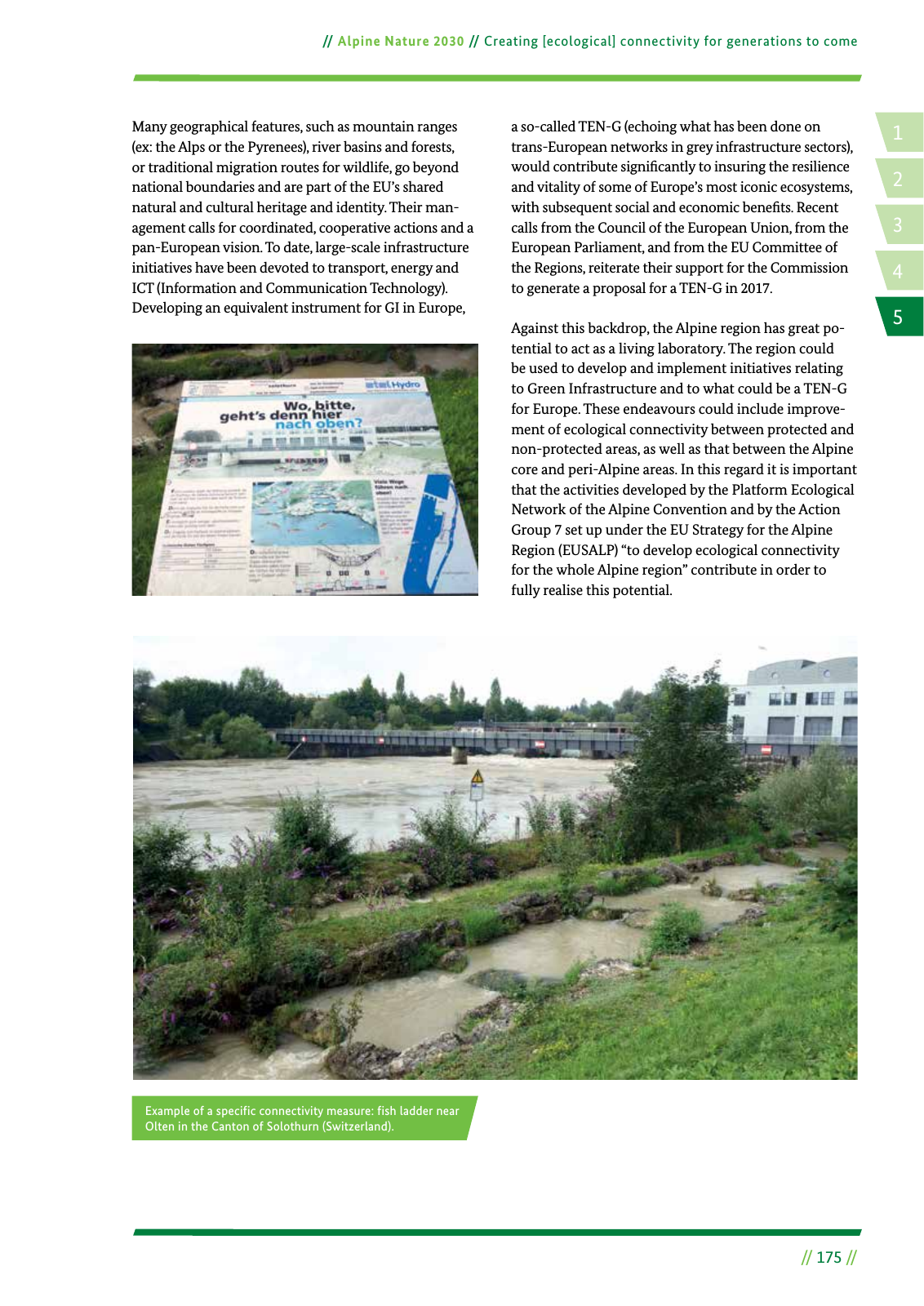14 2 5 3 Alpine Nature 2030 Creating ecological connectivity for generations to come 175 Many geographical features such as mountain ranges ex the Alps or the Pyrenees river basins and forests or traditional migration routes for wildlife go beyond national boundaries and are part of the EU s shared natural and cultural heritage and identity Their man agement calls for coordinated cooperative actions and a pan European vision To date large scale infrastructure initiatives have been devoted to transport energy and ICT Information and Communication Technology Developing an equivalent instrument for GI in Europe a so called TEN G echoing what has been done on trans European networks in grey infrastructure sectors would contribute signi cantly to insuring the resilience and vitality of some of Europe s most iconic ecosystems with subsequent social and economic bene ts Recent calls from the Council of the European Union from the European Parliament and from the EU Committee of the Regions reiterate their support for the Commission to generate a proposal for a TEN G in 2017 Against this backdrop the Alpine region has great po tential to act as a living laboratory The region could be used to develop and implement initiatives relating to Green Infrastructure and to what could be a TEN G for Europe These endeavours could include improve ment of ecological connectivity between protected and non protected areas as well as that between the Alpine core and peri Alpine areas In this regard it is important that the activities developed by the Platform Ecological Network of the Alpine Convention and by the Action Group 7 set up under the EU Strategy for the Alpine Region EUSALP to develop ecological connectivity for the whole Alpine region contribute in order to fully realise this potential Example of a specific connectivity measure fish ladder near Olten in the Canton of Solothurn Switzerland

Hinweis: Dies ist eine maschinenlesbare No-Flash Ansicht.
Klicken Sie hier um zur Online-Version zu gelangen.
Klicken Sie hier um zur Online-Version zu gelangen.